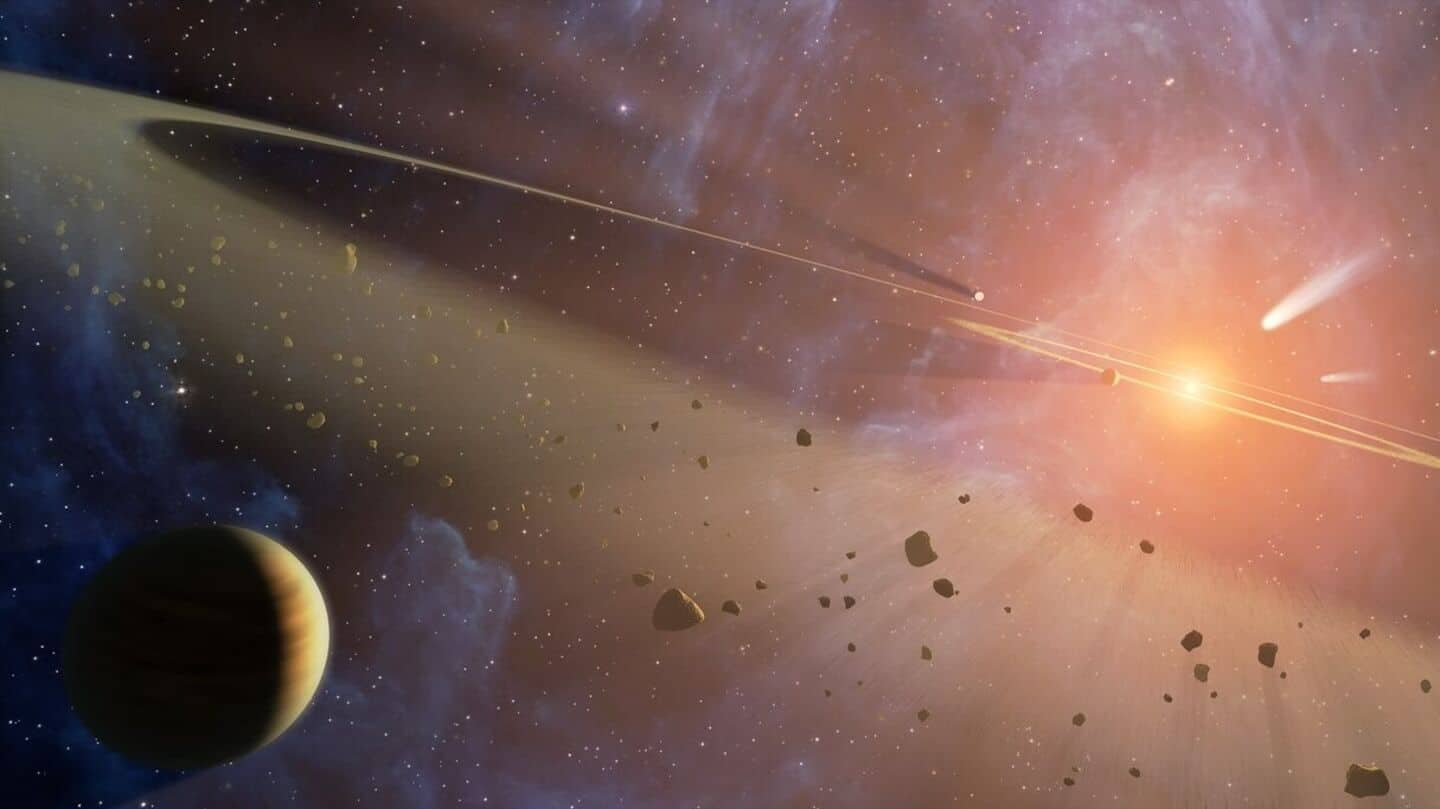
JWST's hunt for planets around Epsilon Eridani yields no results
What's the story
The James Webb Space Telescope (JWST) has failed to find any planets around the star Epsilon Eridani, one of our closest stellar neighbors. The results were recently published on arXiv. However, the observational effort did put some constraints on the potential existence of a planet in the outer reaches of Epsilon Eridani's system, and improved JWST's detection capabilities for future observations.
Mission details
Two planets were hypothesized to exist around Epsilon Eridani
JWST's Near Infrared Camera (NIRCam) was tasked with finding two planets around Epsilon Eridani, a star some 10.5 light-years away and about 400 million years old. The first planet, dubbed Epsilon Eridani b, was thought to be Jupiter-sized and located about 3.5 AU from its host star. The second unconfirmed planet could be responsible for the spectacular rings surrounding the star and is thought to be at a distance of around 45 AU from it.
Detection challenges
'Blob' of light detected near star
In the hunt for Epsilon Eridani b, NIRCam detected a "blob" of light where researchers expected to find a planet. However, this promising discovery was marred by its proximity to a "hexpeckle," an artifact from the coronagraph that flooded the area with noise. Ultimately, despite the initial evidence of a planet-like feature, JWST couldn't confirm its existence due to overwhelming instrument noise.
Search results
No evidence of a ring shepherd beyond 16 AU
The second possible planet was more easily ruled out, with data showing no Saturn-sized planets beyond 16 AU from the star. This suggests a ring shepherd isn't present around Epsilon Eridani. A faint signal on the "eastern" side of the star was detected by NIRCam, but it was likely just dust from its disk scattering light rather than a planet.
Strategy success
New technique improves JWST's detection capabilities
The observations were conducted using a new technique called a "three-roll" observing strategy. This method improved JWST's ability to detect faint objects by 20-30% over the traditional two-roll approach. The authors of the study believe this could greatly enhance JWST's observational capacity for future astronomical targets, paving the way for more discoveries in our universe.